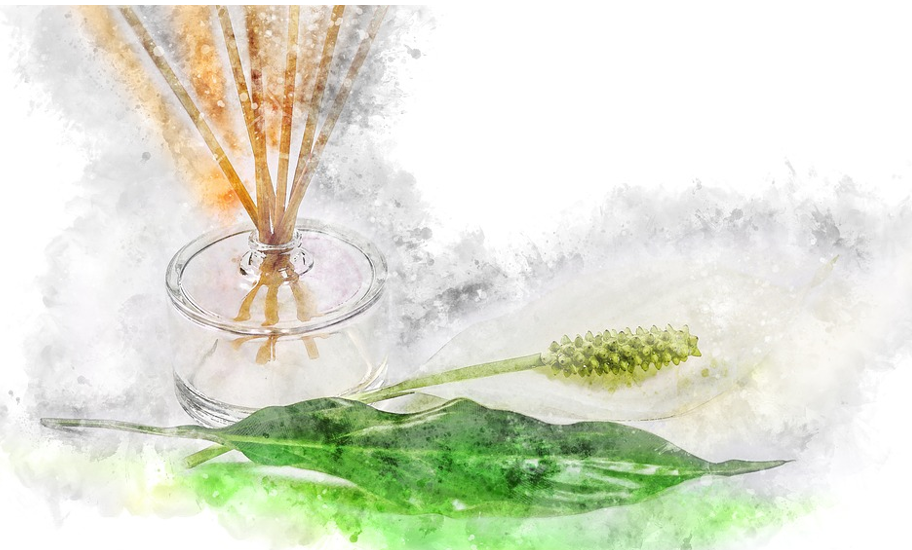In the realm of fragrance, where scents become stories and every perfume bottle holds an olfactory narrative, the Arabian tradition of scent description stands as a mesmerizing art form. It’s a practice that transcends mere appreciation and elevates the experience of perfumes to the level of poetry.
In this fragrant journey, we’ll explore the enchanting world of Arabian scent description, where every drop of Arabic perfume is a verse waiting to be sung.
The Language of Perfume
Arabian scent description is more than a practical guide to identifying fragrances; it’s a language of its own, rich with metaphors and emotions. It’s a way to convey the intangible aspects of scent that words alone often struggle to capture.
Scent as Poetry
In the Arabian tradition, describing a fragrance is akin to composing poetry. The Arabia perfume descriptions are more than just lists of notes; they’re lyrical expressions that paint vivid pictures in the mind of the reader or listener.
Metaphors and Imagery
Arabian scent descriptions are replete with metaphors and imagery. Scents are often likened to natural elements, emotions, or scenes from nature. For example, a fragrance might be described as “the scent of blooming jasmine under a full moon” or “the warmth of the desert at sunset.”
The Role of Tradition
The art of Arabian scent description is deeply rooted in tradition and culture. It’s a practice that has been passed down through generations, with each perfumer adding their unique touch to the craft.
Ancestral Wisdom
Arabian perfumers inherit not only the techniques of creating fragrances but also the language to describe them. These traditions are repositories of wisdom, ensuring that the art remains alive and vibrant.
Cultural Significance
Arabian scent description has cultural significance, particularly in the context of rituals and special occasions. It’s a way to mark significant moments, such as weddings and religious ceremonies, with the power of scent and words.
The Scent Poet
In the world of Arabian perfumery, there exists a unique figure – the scent poet. These individuals are not just skilled perfumers but also wordsmiths who can weave intricate descriptions of scents that transport the mind to distant realms.
A Dual Craft
Scent poets must master the dual craft of perfumery and poetry. They understand the technical aspects of fragrance creation as well as the subtleties of language.
A Perfume’s Storyteller
Scent poets play a crucial role in the world of Arabian perfumery. They are the ones who translate a fragrance’s essence into words, allowing others to appreciate its beauty.
The Arabian Perfume Lexicon
Arabian scent description has its own lexicon, a treasury of words and phrases dedicated to capturing the nuances of fragrance. Some terms are so specific that they might not have direct equivalents in other languages.
Scent Families
The Arabian air freshener for office lexicon categorizes scents into various families, such as floral, woody, or oriental. These categories serve as a starting point for more detailed descriptions.
Subtle Variations
Within each scent family, there are subcategories that capture the subtle variations in fragrances. For instance, a woody fragrance might be further described as smoky, earthy, or resinous.
The Intimate Connection with Nature
Arabian scent descriptions often draw from nature. This is a reflection of the deep connection between the people of the region and their natural surroundings.
Desert Scents
The scents of the Arabian desert are particularly celebrated. Fragrances are often compared to the aroma of sand after a rain, the warmth of the sun on dunes, or the coolness of an oasis.
Floral Poetry
Arabian perfumes feature a wide array of floral scents. Each flower is not just named but described in a way that evokes its color, shape, and the emotions it inspires.
Capturing Memories and Emotions
Scent descriptions in the Arabian tradition go beyond just the physical aspects of fragrance. They also aim to evoke memories and emotions.
The Power of Nostalgia
Certain scents are described in a way that takes the mind back to specific moments in one’s life. This connection with the past is a cherished aspect of Arabian scent description.
Emotional Resonance
Fragrances are often linked with emotions, and the words used to describe them are carefully chosen to convey these feelings. A scent may be described as comforting, passionate, or melancholic.
As we embark on this fragrant journey, let’s delve deeper into the art of Arabian scent description and how it intertwines with the world of perfumery. Much like a beautifully composed symphony, the process of crafting and describing Arabian scents is a harmonious interplay of various elements.
The Poetry of Perfumery
Arabian perfumes are renowned for their ability to evoke emotions and tell stories. They are like verses of poetry, capturing the essence of nature and culture in a single drop. To understand this art, one must first appreciate the role of fragrance in Arabian culture.
In the Heart of Tradition: Perfume has been an integral part of Arabian culture for centuries. It’s deeply rooted in their traditions and rituals. Whether it’s welcoming guests into their homes or preparing for religious practices, scents play a significant role. This is where the art of Arabian scent description originates.
Capturing Nature’s Beauty: The Arabian Peninsula is a land of diverse landscapes, from the mesmerizing deserts to lush oases. These landscapes are reflected in the scents created here. Arabian perfumers use nature’s palette to craft fragrances that capture the essence of their surroundings.
Ancestral Wisdom: Arabian perfumery is passed down through generations, preserving the wisdom of scent blending. This art isn’t confined to grand perfume houses; it’s part of family legacies, where the secrets of crafting the perfect fragrance are shared from parent to child.
The Scent Palette of Arabia
Arabian perfumers have a unique palette of scents to work with. These fragrances are often described poetically, much like verses in a love poem.
Oud: The Liquid Gold: Oud, also known as “liquid gold,” is perhaps the most iconic Arabian fragrance. It’s derived from the resin of agarwood trees and is cherished for its rich, woody aroma. To describe oud is to embark on a poetic journey. It’s often likened to the scent of ancient temples, with notes of earth, incense, and history.
Amber: A Glimpse of the Past: Amber is another treasure in the Arabian scent palette. It exudes warmth and nostalgia, with notes of honey, resin, and a touch of earthiness. When describing amber, it’s as though you’re narrating the tales of caravans that once crossed the deserts.
Rose: A Fragrant Bouquet: The scent of roses is celebrated in Arabian perfumery. It’s described as the breath of a thousand roses on a warm breeze. Arabian rose perfumes are often a blend of different rose varieties, creating a complex and enchanting aroma.
The Magic of Scent Description
Arabian scent description isn’t just about listing ingredients; it’s about creating an olfactory experience through words. It’s akin to painting a vivid picture with the reader’s sense of smell.
Visual Metaphors: Fragrances are often compared to visuals, connecting the reader’s imagination with the scent. “As golden as the desert at dawn,” “like a velvet midnight sky,” or “bright as a sun-kissed oasis” are common descriptions.
Emotions and Memories: Scent is deeply tied to our emotions and memories. Arabian perfume descriptions often evoke these by associating scents with feelings. “A fragrance that whispers of love,” or “a scent that carries the warmth of family gatherings” are common examples.
Historical and Cultural References: Arabian perfumery is rich in history and culture, and this is often reflected in scent descriptions. “A fragrance fit for a sultan,” or “a perfume that harkens back to the days of ancient traders” can transport the reader through time.
The Perfume Journey Continues
Arabian perfume description is more than just a list of ingredients. It’s a cultural expression, a connection to nature, and a poetic journey through fragrance. It’s a testament to the enduring art of perfumery, where words and scents come together to create a sensory symphony.
As we conclude this exploration of the art of Arabian scent description, remember that the next time you experience an Arabian perfume, you’re not just wearing a scent; you’re carrying a piece of culture, tradition, and poetry with you. The fragrance is a bridge that connects us to the past, the present, and the beauty of the Arabian world.
In the world of perfumery, the Arabian scent description is a masterful overture, inviting us to immerse ourselves in the scents of a rich and diverse culture. It’s an art form that transcends time and speaks to the soul, and it continues to weave its poetic magic into the world of fragrance.
The next time you encounter an Arabian perfume, take a moment to close your eyes, inhale its alluring aroma, and let the poetic descriptions carry you to the heart of Arabian culture. It’s a journey filled with tradition, luxury, and elegance, and it’s a journey that never truly ends, as the world of fragrance continues to evolve and captivate us with its beauty.
In Conclusion
Arabian scent description is a world where perfume and poetry converge, where scents become verses and fragrances are tales waiting to be told. It’s a tradition deeply rooted in culture, history, and nature, where the art of fragrance is elevated to a form of expression that transcends language.
The next time you encounter an Arabian perfume, take a moment to appreciate not just its scent but the poetic tapestry of words that accompanies it, for in those descriptions lies a world of sensory wonder.
Author Bio:
Sayed Sayeedur Rahman is a certified digital marketer, SEO specialist, and content writer. He’s a certified professional with extensive professional experience working with USA and UK-based companies to grow their businesses. He’s the Co-Founder of TechLookBD and Digitize Online digital marketing agency.



